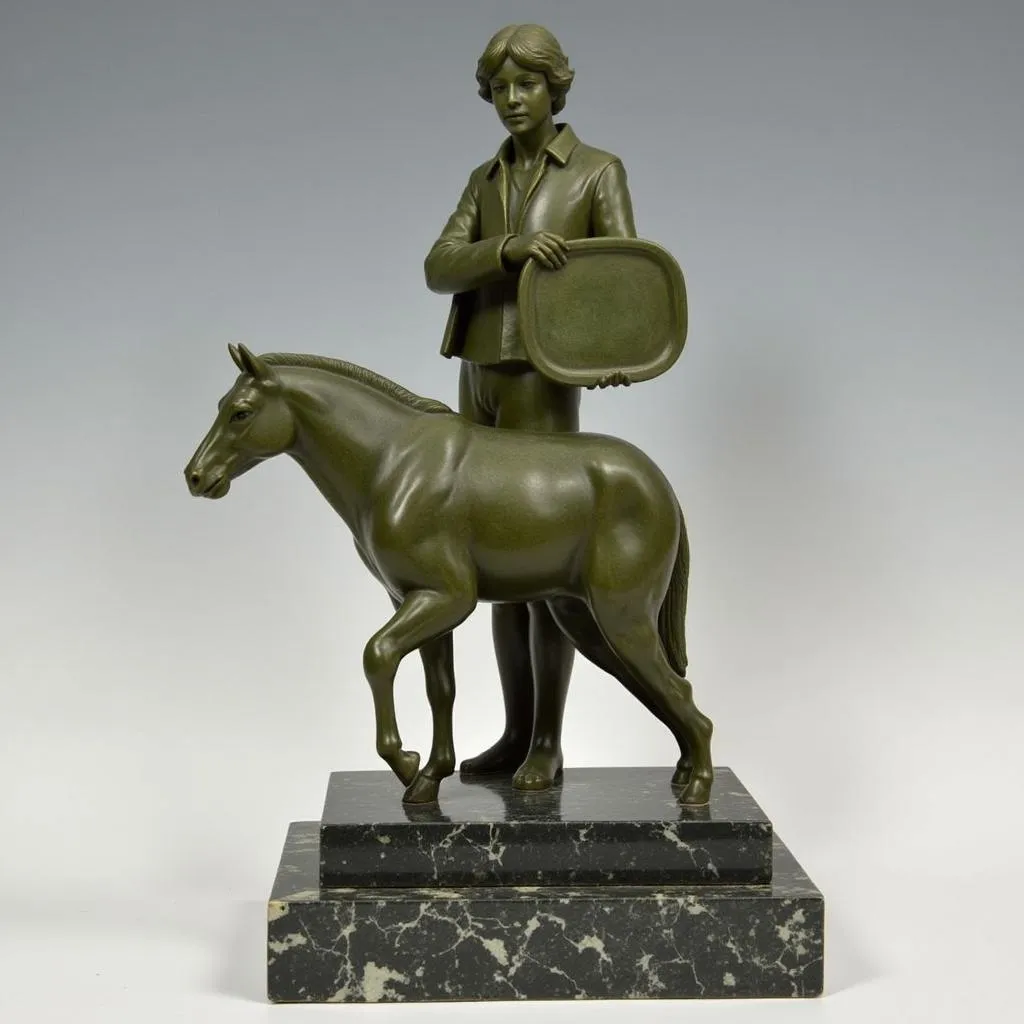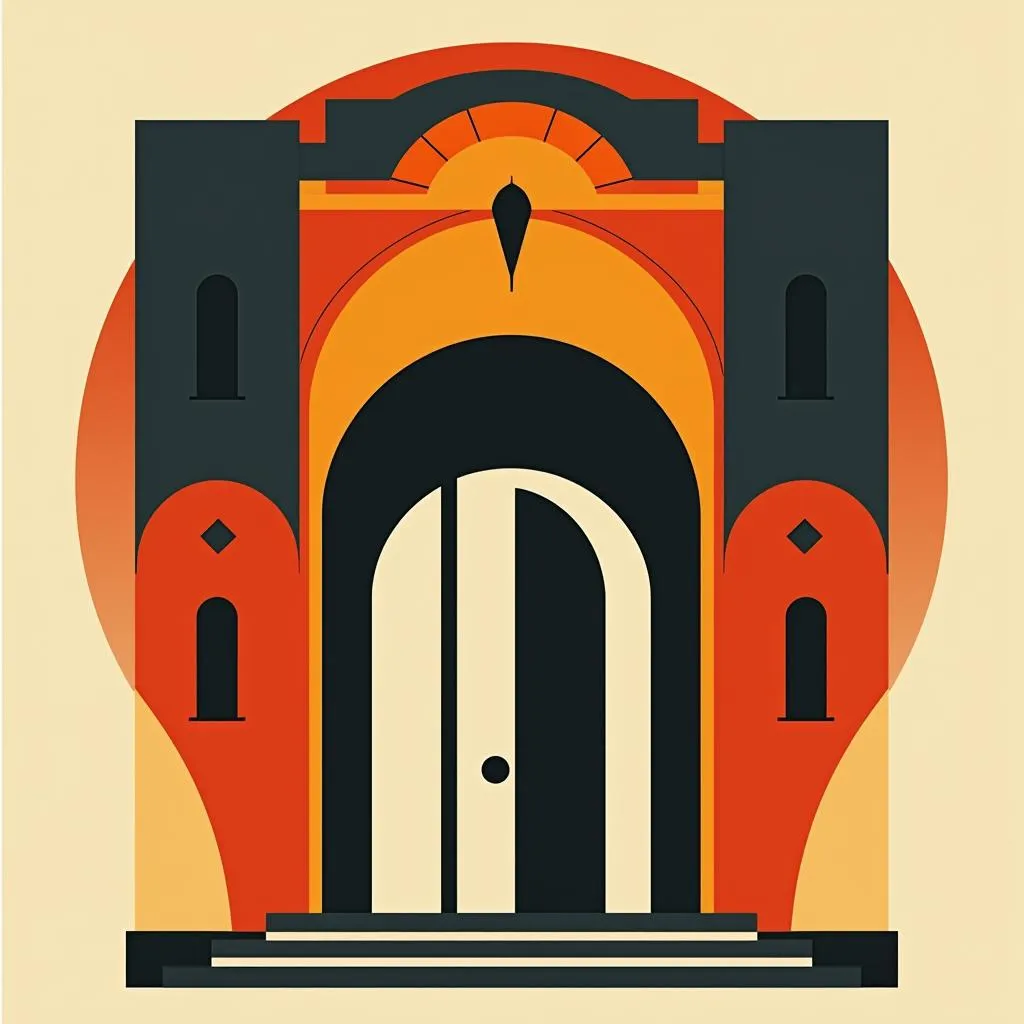Antique Art Deco: A Timeless Fusion of Elegance and Modernity
Antique Art Deco is a captivating style that transcends time, seamlessly blending the classic beauty of the past with the modern spirit of the future. This aesthetic movement, born in the 1920s and 1930s, left an indelible mark on design, architecture, fashion, and art, captivating audiences with its geometric patterns, streamlined forms, and luxurious materials. Let’s delve into the fascinating world of antique Art Deco, exploring its origins, key characteristics, and lasting influence.
The Rise of a New Era
Antique Art Deco emerged in the wake of World War I, a period of profound societal transformation. The desire for a fresh and optimistic aesthetic led to a rejection of the traditional, ornate styles of the Victorian era, paving the way for a bold and modern approach to design. This shift was further fueled by the rapid advancements in technology, particularly in the fields of manufacturing and transportation.
Defining Characteristics of Antique Art Deco
Antique Art Deco is characterized by its distinctive visual language, embodying a unique fusion of elegance and dynamism. Here are some key features that define the style:
- Geometric Patterns: Sharp lines, angles, and geometric shapes dominate Art Deco designs. This emphasis on geometric patterns creates a sense of order and clarity, reflecting the modern spirit of the era.
- Streamlined Forms: Inspired by the aerodynamic designs of cars and airplanes, Art Deco incorporates streamlined forms and flowing curves, conveying a sense of movement and dynamism.
- Luxurious Materials: Antique Art Deco embraced the use of opulent materials, such as polished wood, ivory, chrome, and exotic woods, reflecting the era’s economic prosperity and fascination with luxury.
- Bold Colors: Art Deco employed a vibrant palette of rich colors, often in striking combinations of primary colors, metallics, and jewel tones. These bold color choices added a sense of energy and excitement to the designs.
- Natural Motifs: While geometric patterns dominate, Art Deco also incorporated natural motifs, such as stylized flowers, sunbursts, and fan shapes, adding a touch of organic beauty and elegance.
Antique Art Deco in Art
Antique Art Deco found its most iconic expression in the visual arts, particularly in painting, sculpture, and graphic design.
Painting:
 Art Deco Painting Styles
Art Deco Painting Styles
Art Deco painting often showcased dynamic compositions, vibrant color palettes, and a focus on capturing the energy and movement of modern life. Artists like Tamara de Lempicka, known for her glamorous portraits, and Jean Dunand, renowned for his lacquer works, embodied the spirit of the era.
Sculpture:
 Art Deco Sculpture Examples
Art Deco Sculpture Examples
Art Deco sculpture often featured stylized human figures and animals, with simplified forms and an emphasis on geometric shapes. Notable Art Deco sculptors include Demetre Chiparus, whose sculptures celebrated the female form, and Donald Deskey, who explored the use of new materials and techniques.
Graphic Design:
 Art Deco Graphic Design Examples
Art Deco Graphic Design Examples
Art Deco graphic design played a significant role in shaping the visual identity of the era, with its bold typography, geometric patterns, and use of contrasting colors. This style was widely used in posters, advertisements, book covers, and product packaging.
The Enduring Legacy of Antique Art Deco
Antique Art Deco, despite its relatively short lifespan, has left an enduring legacy on design and aesthetics. Its influence can still be seen in various aspects of contemporary culture, from fashion and furniture to architecture and graphic design.
- “The Art Deco style is a fascinating blend of classic and modern, which appeals to people who want to create spaces that are both elegant and stylish.” – [Name of Interior Designer]**, Interior Designer
- “Art Deco’s timeless appeal lies in its ability to capture the spirit of innovation and sophistication, making it relevant even today.” – [Name of Art Historian]**, Art Historian
Frequently Asked Questions:
- What is the difference between Art Deco and Art Nouveau? Art Nouveau, which preceded Art Deco, emphasized organic and flowing lines inspired by nature, while Art Deco focused on geometric shapes and a more streamlined aesthetic.
- How can I incorporate Art Deco elements into my home decor? You can add Art Deco elements to your home by incorporating geometric patterns in your rugs, wallpaper, or artwork, using furniture with sleek lines and curves, or incorporating bold colors and metallic accents.
Antique Art Deco: A Timeless Inspiration
Antique Art Deco’s unique combination of elegance, dynamism, and timeless appeal continues to inspire artists, designers, and collectors today. Its influence can be seen in various fields, demonstrating its enduring legacy as a testament to the power of creative vision and the enduring allure of timeless aesthetics.

